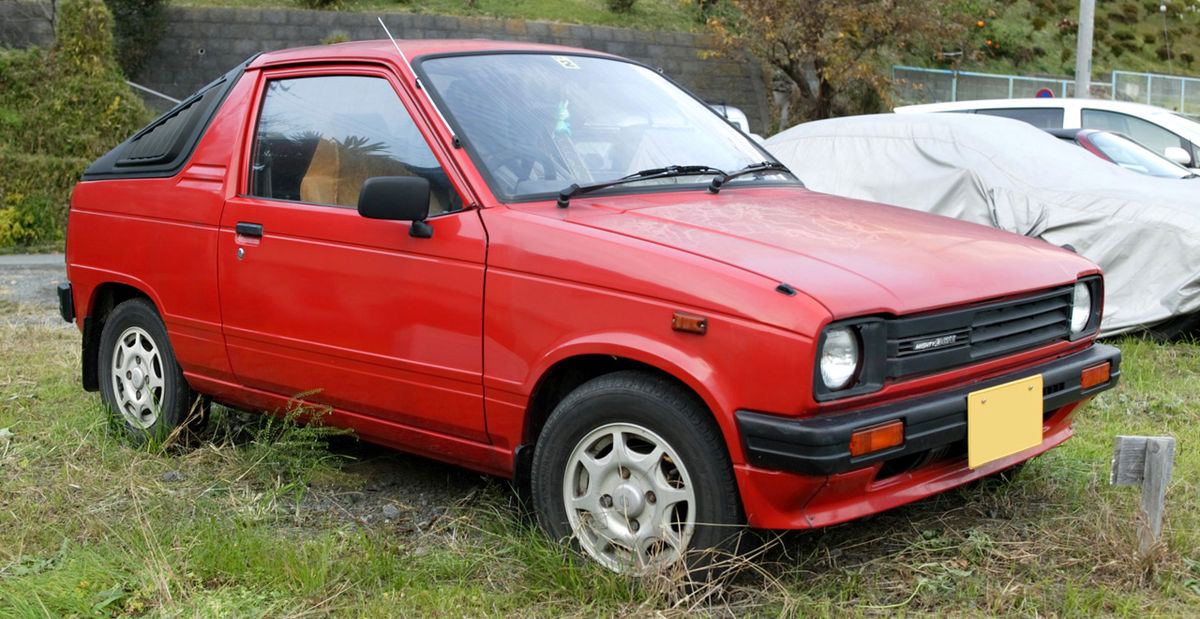The history of the automotive industry is full of curious marques and nameplates, but the Suzuki Mighty Boy had much more to offer than just an unconventional name. It was one of the most exciting vehicles Suzuki ever offered in Australia, thanks to its unique design, tiny dimensions, and super-affordable price.
The Kei pickup did look like a boy among full-sized bonnet-type pickups, but did it ever offer enough utility and capability in its small package? You will find out in the following paragraphs.
The First Generation of Suzuki Mighty Boy (1985-1988)
Suzuki introduced the first and only generation of this mini ute in 1983. Back in the day, Suzuki was one of the key players in the unique Kei car segment—the smallest class of highway-legal vehicles in Japan. There were strict rules regarding the dimensions, weight, and engine size of a Kei car.
The Japanese automaker wanted to offer not only a small passenger car but also one that doubled as practical utility vehicle.
The Mighty Boy, which arrived in 1983, was based on a small sporty car called Cervo. Two years later, we saw it debut in Australia, and 39 years later, it remains one of the very rare Kei cars that rolled Down Under.
It was available for about four years, between 1985 and 1988, and was the cheapest car on the market, with a starting price of just $5,795 (AUD). It’s hard to tell exactly how many Suzuki Mighty Boys were sold in Australia, but some sources suggest that around 2,800 units were imported.
Design
The Suzuki Mighty Boy was originally launched in 1983 in Japan, heavily based on other Kei cars from Suzuki's stable at the time. It has most things in common with Cervo, and that doesn't refer just to mechanics but to aesthetics as well. The front end looked pretty much the same, with a small cargo bed 600mm long.
For the Australian market, Suzuki prepared a couple of exclusive features. It came with slightly revised features, like chrome roof rails, bucket seats, and 12-inch wheels. Compared to traditional pickups, the main advantage was inside, where you will find Mighty Boy’s low-driving position similar to sports cars. This characteristic ensures a great driving experience, despite modest engine and overall performance.
Mechanically, things were quite typical. The vehicle featured an FF layout, with a transverse, front-mounted engine, and front-wheel drive.
Unfortunately, the Suzuki Mighty Boy 4x4 wasn’t offered in Australia.
For the suspension setup, this small ute featured an independent front suspension with an independent arm, coil springs, and hydraulic dampers. The rear suspension was more rudimentary and featured a solid axle, leaf springs, and hydraulic dampers. The front wheels were equipped with disc brakes, while the rear end had good-old drum brakes.
Dimensions
Although it featured a bonnet-type layout, the Suzuki Mighty Boy ute was essentially a Kei car, so you can imagine tiny dimensions, such as a 2150mm wheelbase, 3195mm overall length, 1395mm width, and a height of 1365mm (comparable with sportscars rather than pickups).
With a cargo bed just 600mm long, you can conclude that its utility potentials were quite limited. However, tiny dimensions also provided advantages, such as excellent manoeuvrability. For example, the turning circle was just 8.8 metres.
The kerb weight of base models were about 530kg, while automatic transmission versions were slightly heavier at around 550 kg.
Suzuki Mighty Boy Dimensions
- Wheelbase: 2150mm
- Length: 3195mm
- Height: 1365mm
- Width: 1395mm
- Kerb weight: 530kg (manual); 550kg (automatic)
- Turning circle: 8.8m
- Rear track: 1170mm
- Front track: 1215mm
Engine
The point of such a small vehicle isn't just high manoeuvrability and efficiency, as you will see. The Japanese engineers installed a small three-cylinder unit that would offer a good balance between power and fuel economy. Its small 543cc three-cylinder engine had much in common with the more familiar F8A four-cylinder. Suzuki engineers removed one of the cylinders and changed the stroke from 66 to 60 mm.
With a classic carburettor fuel system, the engine featured a max output of 23 kW and 35 Nm of torque. The engine was mounted transversally, and FWD was the only drivetrain option offered, but buyers had a choice between two transmissions—a 4-speed manual and a 2-speed automatic gearbox. The max towing capacity was around 300kg.
Suzuki Mighty Boy Engine Specs:
- Engine capacity: 543cc
- Number of cylinders: 3
- Fuel type: Leaded Petrol
- Fuel system: Carburetor
- Forced induction: -
- Maximum torque: 35Nm
- Maximum power: 23kW
- Transmission: 4-speed manual; 2-speed automatic
- Drivetrain: front-wheel drive
- Fuel economy (estimated): 5L/100km (manual); 5.5L/100km (automatic)
- Fuel tank capacity: 30L
- Max towing capacity: 300kg
How Many Suzuki Mighty Boys Were Sold in Australia?
The exact numbers are unknown, but as we already mentioned, around 2,800 units were imported to Australia. When it comes to Japan's domestic market, we know that this small pickup was never a best seller, but due to its unique design, it still has a small fan base of hardcore Kei enthusiasts in its home country. Besides Japan and Australia, the Mighty Boy was also sold in Cyprus for a few years.
You can still find many fine examples in today's used car market. If you have a Mighty Boy sitting in your yard, you may consider selling it, as they still hold their price very well. Good examples can go between 2,400 and 4,000 Australian dollars.
If you're interested in selling one of these, you may consider advertising your Suzuki Might Boy on our website to find more interested buyers and get a better deal.
By Nebojsa Grmusa

